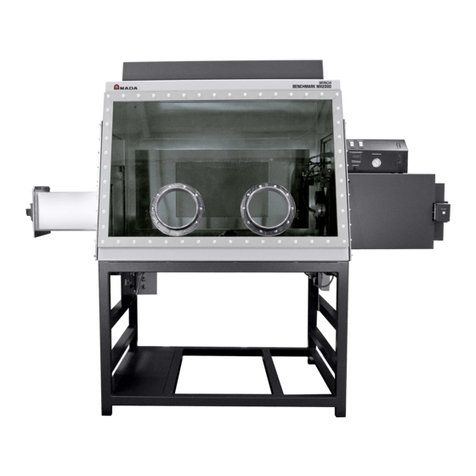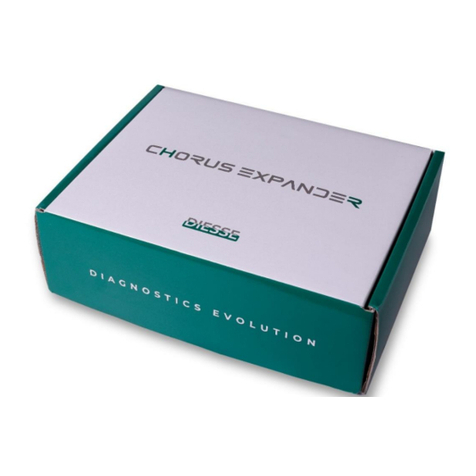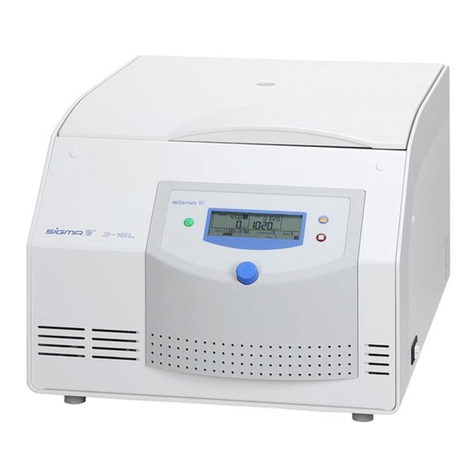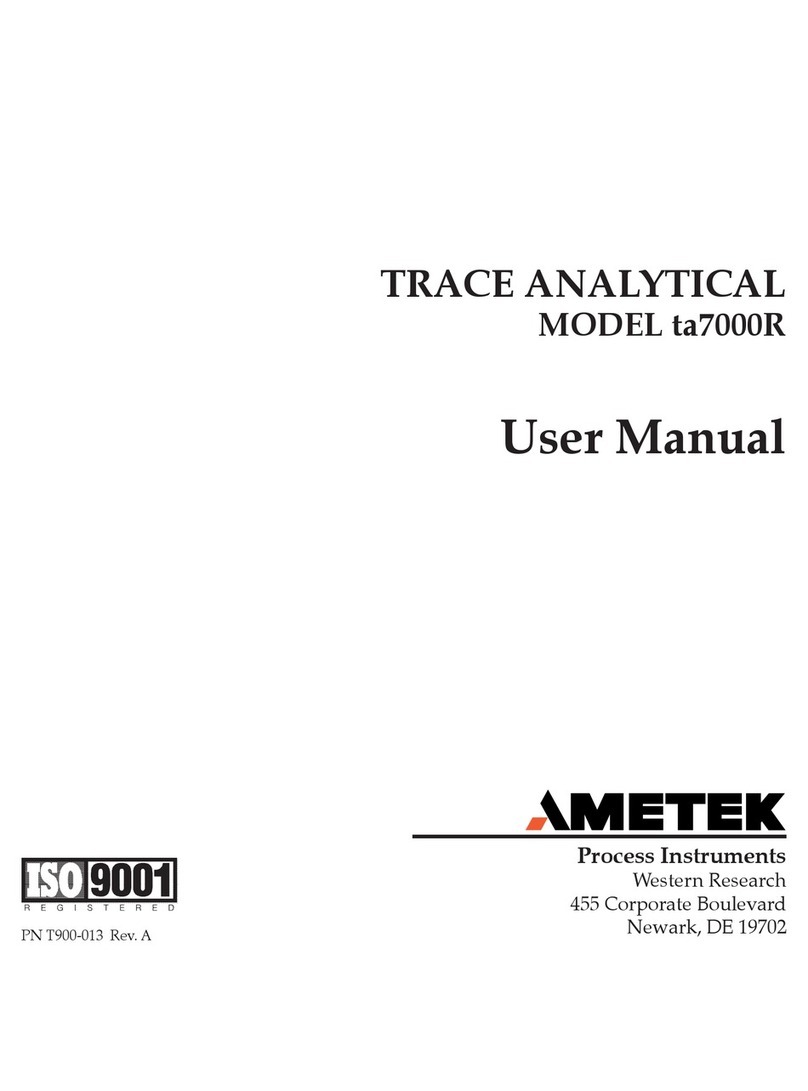Pecon P Lab-tek Series User manual

German - English
Manual
Cell Culture + Microscopy
°C
Heating Insert P
Lab-Tek™ type
Lab-Tek™
(
Nunc®
)
Chamber Slide
(
Nunc®
/
Falcon®
)
Object slide
Petri dish "60" and "35" POC-R
(
LaCon
)
POCmini
(
LaCon
)
Laminar
air flow
37°C
5.0 %
7.0 %
CO
2
O
2
Stabilization of the “ environment”
for cell and tissue culture
in vitro
CTI-C ontroll er 3700
control C O
setpoint
ventilation
speed
heating
intensity
5.0 2 2
2
%
CO
reducingvalve
2
heater
normal
overhe at
on
off
power
remote
display
valve
nom
real
tempcontrol37-2
37.0 37.0
on
power
off
°C
digital
1
2
E
+
++
+

Die Kenntnis dieses Manuals ist notwendig zum Betrieb des Gerätes. Machen sie sich daher bitte mit
dem Inhalt dieses Manuals vertraut und achten sie besonders auf Hinweise, die der sicheren
Bedienung des Gerätes dienen.
Änderungen, die dem technischen Fortschritt dienen, bleiben vorbehalten. Das Manual unterliegt
keinem "Update-Service".
Solange keine ausdrückliche Genehmigung vorliegt, ist die Weitergabe und Vervielfältigung dieses
Dokuments und die Benutzung und Verbreitung seiner Inhalte nicht gestattet. Verstöße verpflichten zur
Zahlung von Entschädigung.
Alle Rechte vorbehalten, die im Falle der Gewährung von Patenten und Gebrauchsmustern
entstehen.
A
lle in diesem Handbuch erwähnten Produktnamen können Warenzeichen oder eingetragene
Warenzeichen der jeweiligen Eigentümer sein und sind nicht überall ausdrücklich durch "TM" und "®"
gekennzeichnet.
© 2004
Dieses Symbol kennzeichnet Hinweise, die unbedingt beachtet werden müssen!
Dieses Symbol kennzeichnet Hinweise, die der Sicherheit des Benutzers, sowie zur Vermeidung
der Beschädigung der Geräte dienen.
Dieses Symbol kennzeichnet den Hinweis, das Gerät von Stromnetz zu trennen!
Vor dem Anschluss an das Stromnetz ist die eingestellte Netzspannung am Gerät zu
überprüfen und gegebenenfalls anzupassen! Korrekte Sicherung einsetzen!
Knowledge of this manual is required for the operation of the device. Would you therefore please
make yourself familiar with the contents of this manual and pay special attention to hints concerning
the safe operation of the device.
Design and specifications are subject to change without notice. The manual is not covered by an
update service.
Unless expressly authorized, forwarding and duplication of this document, and the utilization and
communication of its contents are not permitted. Violations will entail an obligation to pa
y
compensation.
All rights reserved in the event of granting of patents or registration of a utility model.
A
ll product names mentioned herein may be the trademarks or registered trademarks of their
respective companies and "TM" and "®" are not mentioned in each case in this manual.
© 2004
This symbol is a warning which must be observed under all circumstances!
This symbol is a warning which indicates information for the safety of the user and for the
avoidance of harm to the devices.
This symbol is a warning which indicates to disconnect the instrument from the line!
Before connecting to the line, the selected line voltage at the device is to be checked
and to be changed if necessary! Put in the correct fuse!

12.01.2004 www.pecon.biz
Heizeinsatz P # 0441.000
Lab-Tek™ Ausführung
für Märzhäuser Scanningtisch IM 120x100,
und mechanischer Kreuztisch Zeiss
Aussparung 160 x 110 mm
Cell Culture + Microscopy
Aufsicht
Seitenansicht
Kurzbeschreibung
• Heizbarer Einsatz (Aluminium) für Scanning- und Kreuztisch mit hoher
Temperaturkonstanz und Wärmeleitfähigkeit. Die Heizung erfolgt durch
Transistorverlustleistung ohne störende Schaltimpulse.
• Stabile Konstruktion, daher insbesondere auch für Laserscanningmikros-
kopie (LSM) geeignet. Eine Acrylglasabdeckung mit einem zentralen
Glaseinsatz (DIC) wird mitgeliefert.
• Die rechteckige Beobachtungsöffnung (46 x 21 mm) ist speziell für die
Arbeit mit Lab-Tek™ Kammern (Nunc®), Chamber Slides (Nunc®/
Falcon®) und Objektträgern (max. 80 x 27 mm) geeignet.
• Zusätzlich ist auch der Einsatz des POC-R / POCmini Zellkultivierungs-
systems und von Petrischalen ("60"er und "35"er) möglich. Ein Ring-
Adapter mit Inbusschrauben ermöglicht die Anpassung an verschie-
dene "35"er Petrischalen.
• Zwei Öffnungen an der linken und rechten Seite ermöglichen die
Durchführung von Schläuchen, z.B. für die Perfusion. Der Niveauaus-
gleich im Mikroskoptisch kann durch vier Schrauben erfolgen.
• Basiseinsatz für ein Inkubationssystem (°C + CO2) an inversen Mikros-
kopen in Kombination mit Inkubator S und CTI-Controller.
Technische Daten
Material Aluminium, schwarz eloxiert
Betriebsspannung 24 V Schutzkleinspannung
Leistungsaufnahme ca. 8 VA bei 37°C
Regelbereich 3°C über RT bis 60°C
Beobachtungsöffnung 46 x 21 mm
Klemmbereich Ø 52-58 mm
Ø 35-38 mm (Ring-Adapter)
71-76 mm
54-59 mm (Lab-Tek™ Adapter)
Abmessungen (BxHxT) 160 x 110 x 18 (+4) (in mm)
Gewicht (kg) 0.8
Tempcontrol 37-2
digital
# 0503.000
tempcontrol 37-2
37.0 37.0
on
power
off
°C
digital
1
2
E
+
++
+
POC-R
# 0727.100
Zubehör (inklusive)
Acrylglasdeckel mit Glaseinsatz # 0426.102
Roter Einsatz # 0426.103
Ring-Adapter für Petrischalen "35"er # 0426.104
Inbus-Schlüssel # 0311.001
Lab-Tek™ Adapter # 0441.010
Abstandsblock # 0441.011
Schaumstoffhülsen, 4 Stck. # 0420.012-4
Inkubator S
# 0425.200
CTI-Controller
# 0420.500
CTI-Controller 3700
digital
control CO
setpoint
ventilation
speed
heating
intensity
5.0 22
2
%
CO
reducing valve
2
heater
normal
overheat
on
off
power
remote
up up up
down
down down
display
valve
nom
real

2Manual: Heating Insert P – Lab-Tek™ type
www.pecon.biz 12.01.2004
Montage:
tempcontrol 37-2
37.0 37.0
on
power
off
°C
digital
1
2
E
+
++
++
+
perfusion
perfusion
s = spring clamping
l-s
l-s
l-s
l-s
l-s = levelling-screw
s
• Heizeinsatz P in den Scanningtisch bzw. mechanischen Kreuztisch einsetzen. Die Ausrichtung zur
Objektivachse kann durch die vier Schrauben "l-s" erfolgen.
• 8-poligen Stecker in einen freien Kanal des Tempcontrol 37-2 digital (# 0503.000) bzw.
Tempcontrol 37-2 analog (# 502.000) stecken und durch Rechtsdrehung sichern.
Betrieb:
• Gewünschte Temperatur am Tempcontrol einstellen und Heizung einschalten (siehe Anleitung
Tempcontrol).
• In Kombination mit dem Inkubator S sollte zur Aufrechterhaltung der Luftzusam-
mensetzung die Beobachtungsöffnung bei nicht-eingesetzter Zellkultivierungs-
einheit durch den roten Einsatz verschlossen werden.
Einsatz verschiedener Zellkultivierungssysteme im Heizeinsatz P (siehe auch Seite 9):
• Lab-Tek™ (Nunc®):
1. Lab-Tek™ Adapter wie gezeigt einsetzen.
Die Abrundung mit dem Schlitz sollte zum
leichteren Entfernen des Adapters nach
innen zeigen.
2. Zuerst schräg unter die Federklemmung fahren, diese nach
hinten schieben (1) und dann die Kammer nach unten
drücken (2).
12
• Chamber Slides (Nunc®/ Falcon®) – siehe auch Seite 4:
1. Es muss der Abstandsblock wie gezeigt
eingesetzt werden. Der runde Stift sollte voll-
ständig in der rechten Öffnung sitzen.
2. Zuerst schräg unter die Federklemmung fahren, diese nach
hinten schieben (1) und dann die Kammer nach unten
drücken (2).
2
1

Manual: Heating Insert P – Lab-Tek™ type 3
12.01.2004 www.pecon.biz
• Objektträger (max. 80 x 27 mm) – siehe auch Seite 4:
1. Bei Objektträgern unter 76 mm Länge muss
der Abstandsblock wie gezeigt eingesetzt
werden. Der runde Stift sollte vollständig in
der rechten Öffnung sitzen.
2. Zuerst schräg unter die Federklemmung fahren, diese nach
hinten schieben (1) und dann den Objektträger nach unten
drücken (2).
2
1
Bei den folgenden Kultivierungskammern ist der Beobachtungsbereich reduziert. Für diese ist der
Heizeinsatz P (#0426.100) mit einem ovalem Beobachtungsbereich (32 x 30 mm) möglicherweise
besser geeignet:
• POC-R und POCmini:
Beide Zellkultivierungssysteme können direkt mit Hilfe der
Federklemmung befestigt werden.
Bei einer Kultivierung mit Perfusion lassen sich die Perfusions-
schläuche durch zwei seitliche Öffnungen führen. Diese sind
normalerweise durch Inbusschrauben verschlossen.
• Petrischalen:
Petrischalen "60"er (∅52 - 58 mm) können direkt mit Hilfe
der Federklemmung befestigt werden.
"35"er Petrischalen (∅35 – 38 mm) werden im Ring-Adapter
(Metall, ∅58 mm) durch die vier seitlichen Inbusschrauben
fixiert und können dann geklemmt werden.

4Manual: Heating Insert P – Lab-Tek™ type
www.pecon.biz 12.01.2004
Einsetzen von Chamber Slides (Nunc®/Falcon®) und Objektträgern in den Heizeinsatz P –
Lab-Tek™ Ausführung mit montiertem Inkubator S:
1. Chamber Slide oder Objektträger zuerst auf der rechten
Seite durch die Inkubator-Öffnung führen (1).
1
2. Danach wie oben beschrieben schräg unter die Feder-
klemmung fahren, diese nach hinten schieben (2) und
dann den Objektträger nach unten drücken (3).
3
2
Kontaktinformation
Hersteller
PeCon GmbH
Ringstraße 5
89155 Erbach
Fax.: +49 (0)7305 - 931485 Web: www.pecon.biz
Zellkultivierungszubehör:
LaCon
Kornhalde 7
89195 Staig
Fax.: +49 (0)7346 - 5496 Web: www.pecon.biz

12.01.2004 www.pecon.biz
Heating Insert P # 0441.000
Lab-tek™ type
for Märzhäuser Scanning Stage IM 120x100,
and Mechanical Stage Zeiss
Opening 160 x 110 mm
Cell Culture + Microscopy
top view
side view
Description
• Heatable Insert (aluminum) for Scanning Stage and Mechanical Stage
with a high constancy of temperature and thermal conductivity. The
heating is achieved by transistor stray power without disturbing
switching impulses.
• Solid construction, therefore especially suited for laser scanning
microscopy (LSM). An acrylic glass cover with a central glass insert (DIC)
is supplied.
• The rectangular observation area (46 x 21 mm) is especially suited for
Lab-Tek™ chambers (Nunc©), Chamber Slides (Nunc®/ Falcon®) and
Object Slides (max. 80 x 27 mm).
• It is also possible to use the POC-R / POCmini Cell Cultivation System
and Petri dishes ("60" and "35"). An adapter ring with Allen screws
accommodates different "35" Petri dishes.
• Two openings on the left and right side allow the guidance of tubings,
e.g. for perfusion. The level in the scanning stage can be adjusted by
four leveling screws.
• Basic insert for incubation system (°C + CO2) on inverted microscopes
in combination with Incubator S and CTI-Controller.
Specifications
Material Aluminum, black anodized
DC operating voltage 24 V protective low voltage
Rated power approx. 8 VA at 37°C
Control range 3°C above ambient;
up to 60°C
Observation area 46 x 21 mm
Clamping range Ø 52-58 mm
Ø 35-38 mm (adapter ring)
71-76 mm
54-59 mm (Lab-Tek™ adapter)
Dimensions (WxHxD) 160 x 110 x 18 (+4) (in mm)
Weight (kg) 0.8
Tempcontrol 37-2
digital
# 0503.000
tempcontrol 37-2
37.0 37.0
on
power
off
°C
digital
1
2
E
+
++
+
POC-R
# 0727.100
Accessories (included)
Cover with glass insert # 0426.102
Red insert # 0426.103
Ring adapter for "35" Petri dishes # 0426.104
Allen key # 0311.001
Lab-Tek™adapter # 0441.010
Spacer # 0441.011
Plastic foam cylinder, 4 pcs # 0420.012-4
Incubator S
# 0425.200
CTI-Controller
# 0420.500
CTI-Controller 3700
digital
control CO
setpoint
ventilation
speed
heating
intensity
5.0 22
2
%
CO
reducing valve
2
heater
normal
overheat
on
off
power
remote
up up up
down
down down
display
valve
nom
real

6Manual: Heating Insert P – Lab-Tek™ type
www.pecon.biz 12.01.2004
Assembly:
tempcontrol 37-2
37.0 37.0
on
power
off
°C
digital
1
2
E
+
++
++
+
perfusion
perfusion
s = spring clamping
l-s
l-s
l-s
l-s
l-s = levelling-screw
s
• Put the Heating Insert P into Scanning Stage or Mechanical Stage. The levelling can be adjusted
to the optical axis with the four screws "l-s".
• Plug the 8-pin connector into the socket of a free channel of the Tempcontrol 37-2 digital
(# 0503.000) or Tempcontrol 37-2 analog (# 502.000) and secure it by clockwise rotation.
Operation:
• Set the desired temperature value on the Tempcontrol unit and switch-on the heating (see
manual Tempcontrol).
• When combined with the Incubator S the observation window should be closed
with the red insert (# 0426.103) if no cell cultivation chamber is used to maintain
air composition.
Use of different cell cultivation systems in the Heating Insert P (see also page 9):
• Lab-Tek™ (Nunc®):
1. Insert the Lab-Tek™ adapter as shown. The
rounding with the slot should face towards
the inside for easier removal of the adapter.
2. First put the chamber inclined below the spring clamping
and slide it back (1), then push the chamber to the bottom
(2).
12
• Chamber Slides (Nunc®/ Falcon®) – see also page 8:
1. Insert the spacer as shown. The round pin
should sit firmly in the right opening.
2. First put the chamber inclined below the spring clamping
and slide it back (1), then push the chamber to the bottom
(2).
2
1

Manual: Heating Insert P – Lab-Tek™ type 7
12.01.2004 www.pecon.biz
• Object slides (max. 80 x 27 mm) – see also page 8:
1. Insert the spacer as shown for object slides
below 76 mm length. The round pin should
sit firmly in the right opening.
2. First put the object slide inclined below the spring clamping
and slide it back (1), then push the chamber to the bottom
(2).
2
1
With the following cultivation systems the observation area is reduced. For those the Heating Insert P
(#0426.100) with an oval observation area (32 x 30 mm) might be the better solution:
• POC-R and POCmini:
Both cell cultivation systems can be fixed directly with the
spring clamping.
With cell cultivation with perfusion the perfusion tubings can
be guided through the two lateral openings. The openings
are normally closed by Allen screws.
• Petri dishes:
Petri dishes "60" (∅52 - 58 mm) can be fixed directly with
the spring clamping.
Petri dishes "35" (∅35 – 38 mm) are clamped in the
adapter ring (metal, ∅58 mm) by four Allen screws and are
then fixed by the spring clamping.

8Manual: Heating Insert P – Lab-Tek™ type
www.pecon.biz 12.01.2004
Insertion of Chamber Slides (Nunc®/Falcon®) and object slides into the Heating Insert P –
Lab-Tek™ type with attached Incubator S:
1. First guide the Chamber Slide or the object slide through
the right side of the incubator opening (1).
1
3. Then guide the slide inclined below the spring clamping
and slide it back (2), then push the chamber to the bottom
(3).
3
2
Contact information
Manufacturer
PeCon GmbH
Ringstraße 5
89155 Erbach
Germany
Fax.: +49 (0)7305 - 931485 Web: www.pecon.biz
Cell cultivation systems:
LaCon
Kornhalde 7
89195 Staig
Germany
Fax.: +49 (0)7346 - 5496 Web: www.pecon.biz

Manual: Heating Insert P – Lab-Tek™ type 9
12.01.2004 www.pecon.biz
perfusion
, perfusion, observation area: 17 mm
POC-R
pump
bypass
Incubator S
air circuit
air circuit
bypass
Temperature
sensor
Incubator S + Heating insert P
Scanning Stage or Mechanical Stage
CO - IR-sensor
CTI-Controller
3700
filter
CO
2
tube (blue, 4 m)
37-2
digital
amplifier
2
# 0425.200
bypass
Special feature:
* Bypass System, in which the
conditioned air stream may be
diverted through a channel
before the cover is removed.
* The LD-condenser 0.55 may
be used.
cover
observation area: Ø 32 x 30 mm
Heating Insert P
#0426.100
Perfusion of Cell Culture in the POC-R
Regulation of °C and pH-value using the incubation system on the inverted
microscope (Axiovert 100, 135, 200) with scanning stage or mechanical stage
Components:
Incubator S, Heating Insert P,
CTI-Controller 3700,
Tempcontrol 37-2
digital

10 Manual: Heating Insert P – Lab-Tek™ type
www.pecon.biz 12.01.2004
perfusion
pump
observation area: 25 mm
Open Cultivation
pump
medium bottle

Manual: Heating Insert P – Lab-Tek™ type 11
12.01.2004 www.pecon.biz
Foliendeckel (FoilCover)
für POC-R Kammer ("offene Kultivierung") und Petrischalen
Reduktion der Verdunstungsrate von Wasser aus Nährmedien, Agar und Methylzellulose.
Petrischalen für die Zell- und Gewebekultur oder Mikrobiologie sind fast immer Einmal-Schalen aus
Polystyrol mit einem Deckel, der lose und etwas erhaben auf dem Unterteil der Schale liegt. Dadurch
ist ein Austausch der Gasphase zwischen Außenluft und Schalenatmosphäre gewährleistet.
Der Nachteil dieser Konstruktion ist eine relativ hohe Verdunstungsrate, so dass eine erhöhte Ionen-
konzentration im Medium zu Zellschädigungen führen kann. Die meisten CO2-Inkubatoren haben
deshalb eine relative Feuchte von über 90% bei 37°C.
Zellen, die in Petrischalen in Inkubatoren mit geringer relativer Feuchte kultiviert werden (z.B. Mikros-
kop-Inkubator, Zeiss), sollten deshalb besser gegen Verdunstung des Wassers im Medium geschützt
werden.
Die Verdunstungsrate in Petrischalen kann durch einen
Spezialdeckel wesentlich reduziert werden. Der Deckel
hat eine glasklare Folie (CultFoil), die für Gase wie CO2,
O2, N2permeabel ist; dagegen können Wassermoleküle
fast nur bei höherem Druck (z.B. beim Autoklavieren) die
Folie passieren. Die Folie liegt direkt auf dem Schalen-
rand. Der Foliendeckel ist nicht für DIC geeignet !
Der Deckel besteht aus 3 Teilen: Basisring, Folie und Spannring und lässt sich sehr leicht montieren.
Die Sterilisation erfolgt nach der Montage im Autoklav (+121°C) oder durch Trockensterilisation bei
ca. +165°C. Wenn die Folie nach Gebrauch keine Risse aufweist, kann sie weiterhin nach erneuter
Sterilisation verwendet werden.
Vergleich der Verdunstungsrate: CO2-Inkubator versus Mikroskop-Inkubator
Evaporation von Wasser aus "60"er Petrischalen (5 ml Hank's Puffer) ohne und mit FoilCover im Inkuba-
tionssystem am inversen Mikroskop im Vergleich zu Petrischalen im konventionellen CO2-Inkubator:
Gasaustausch
Petrischale
Petrischale
mit FoilCover
Die Meßwerte zeigen deutlich die Vorteile des Foliendeckels, wenn Zellkulturen in Petrischalen oder in
der POC-R Kammer (offene Kultivierung) für Versuche am Mikroskop eingesetzt werden.
Den Foliendeckel gibt es in verschiedenen Ausführungen
Beschreibung Bestell-Nr.
1 Deckel für POC-R Kammer (offene Kultivierung)
bestehend aus Spannring und Basisring
0727.025
1 Pack à 25 Stück CultFoil, 25 µm 0727.026
1 Deckel für "35"er Petrischalen
bestehend aus Spannring und Basisring
0701.000
1 Pack à 25 Stück CultFoil, 25 µm 0701.001
1 Deckel für "60"er Petrischalen
bestehend aus Spannring und Basisring
0702.000
1 Pack à 25 Stück CultFoil, 25 µm 0702.001
Normaldeckel "FoilCover"
Relative Feuchte
der Umgebungsluft
Mikroskop-Inkubator 40 µl/h 4 µl/h 20 % bei 37°C
CO2-Inkubator 3 µl/h 95 % bei 37°C
Inkubationssystem am inversen Mikroskop:
CTI-Controller 3700, Tempcontrol 37-2, Inkubator S, Heizeinsatz P
Spannring (V2A)
CultFoil, gasdurchlässig
(25 µm)
Basisring (V2A)
Montage

12 Manual: Heating Insert P – Lab-Tek™ type
www.pecon.biz 12.01.2004
FoilCover for
POC-R Chamber ("open cultivation") and Petri dishes
Reduction of evaporation of water out of nutrition media, agar and methylcellulose.
Petri dishes used for cell and tissue culture are generally disposable dishes (polystyrene) with a cover
which rests loosely and slightly prone on the top of the dish. This guarantees the exchange of the gas
phase between ambient air and dish atmosphere.
The disadvantage of this construction is a relatively high rate of evaporation leading to a higher con-
centration of ions in the medium and thus damage to cultivated cells. Therefore, most of the
laboratory incubators have a relative humidity of more than 90% at 37°C.
Cells, which are cultivated in Petri dishes in incubators with a low relative humidity (e.g. microscope
incubators, Zeiss), should be better protected against evaporation of water.
The rate of evaporation in Petri dishes can be reduced by
a special cover. The cover has an optically clear foil
(CultFoil), which is permeable for gasses like CO2, O2, N2;
in contrast, water molecules can pass this foil only at
higher temperature and pressure (i.e. during autoclaving).
The foil rests directly on the rim of the dish. The FoilCover
can not be used with DIC !
The cover consists of: base ring, foil and stretching ring and can be assembled very easily. The
sterilization is carried out after assembly in an autoclave (+121°C) or by dry heat at approx.
+165°C. If after use the foil in the cover is not cracked, it can be used again after sterilization.
Comparison of the rate of evaporation:
CO2-incubator versus microscope incubator.
Evaporation of water from "60" Petri dishes (5 ml Hank's buffer) in the incubation system of an inverted
microscope compared to Petri dishes in a conventional CO2-incubator:
gas exchange
Petri dish
Petri dish
w
ith FoilCover
The measured values demonstrate the distinct advantage of the FoilCover, especially if cultivated
cells are investigated in Petri dishes or the POC-R Chamber ("open cultivation") under the
microscope.
There are different types of FoilCover
Description Order No.
1 Cover for POC-R Chamber ("open cultivation")
consisting of stretching ring and base ring
0727.025
1 package à 25 pcs CultFoil, 25 µm 0727.026
1 Cover for 35 mm Petri dishes
consisting of stretching ring and base ring
0701.000
1 package à 25 pcs CultFoil, 25 µm 0701.001
1 Cover for 60 mm Petri dishes
consisting of stretching ring and base ring
0702.000
1 package à 25 pcs CultFoil, 25 µm 0702.001
normal cover FoilCover
relative humidity
of ambient air
microscope incubator 40µl/h 4 µl/h 20% at 37°C
CO2-incubator 3 µl/h 95% at 37°C
Incubation system on the inverse microscope:
CTI-Controller 3700, Tempcontrol 37-2, Incubator S, Heating Insert P
stretching ring (stainless steel)
CultFoil, gas permeable
(25 µm)
base ring (stainless steel)
Assembly
Table of contents
Languages:
Popular Laboratory Equipment manuals by other brands

Pfeiffer Vacuum
Pfeiffer Vacuum HIQUAD QMG 700 operating instructions

TESTO
TESTO 868 instruction manual
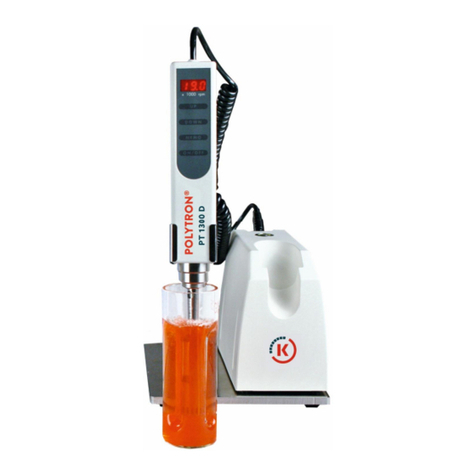
Kinematica
Kinematica POLYTRON SYSTEM PT 1300 D instruction manual
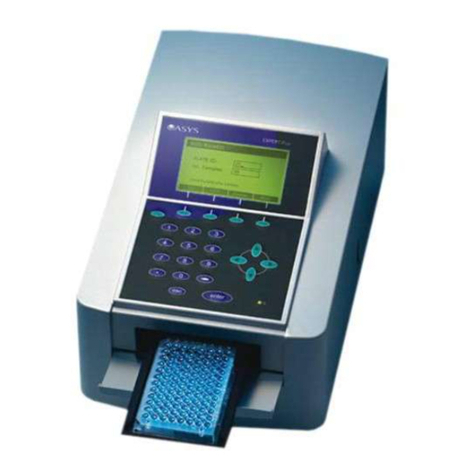
biochrom
biochrom ASYS EXPERT PLUS quick start guide

TESTO
TESTO 876 instruction manual

Calistair
Calistair C300 Translation of the original operating instructions
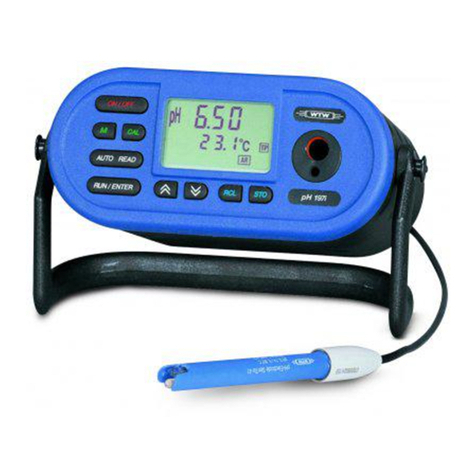
wtw
wtw ProfiLine pH/mV-Meter pH 197 Instruction manuals
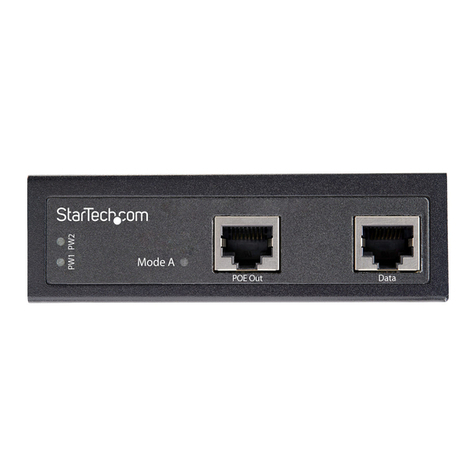
StarTech.com
StarTech.com POEINJ30W quick start guide

Thermo Scientific
Thermo Scientific Barnstead Pretreatment System Installation and operation

Campbell
Campbell UT6 product manual

Leica
Leica RM2155 instruction manual
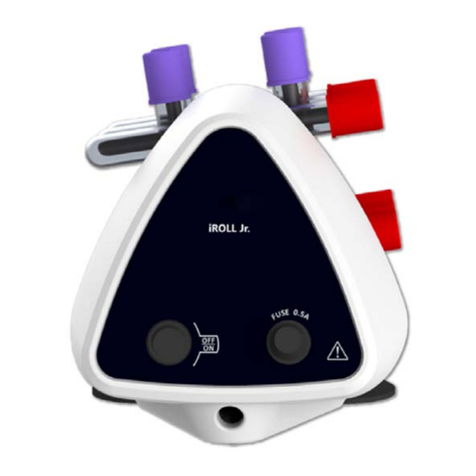
Westlab
Westlab IROLLJR-1200 user manual
